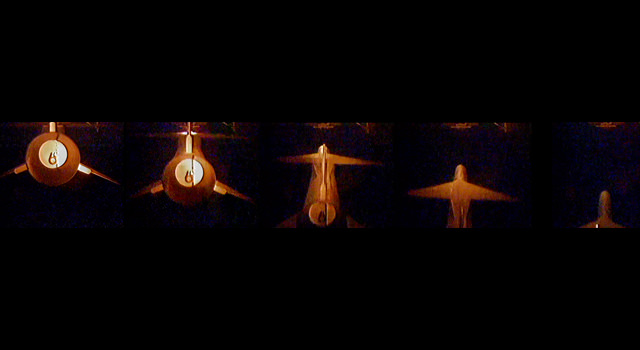[/caption]
The newest mission to hunt for black holes soared to orbit today after first dropping from an aircraft. NASA’s Nuclear Spectroscopic Telescope Array (NuSTAR) launched 16:00 UTC (12 noon EDT, 9 a.m. PDT). NuSTAR was strapped to an Orbital Sciences Pegasus rocket, both of which strapped to an L-1011 “Stargazer” aircraft. The plane left Kwajalein Atoll in the central Pacific Ocean one hour before launch. Then at 9:00:35 a.m. PDT the rocket dropped, free-falling for five seconds before firing its first-stage motor.
“NuSTAR will help us find the most elusive and most energetic black holes, to help us understand the structure of the universe,” said Fiona Harrison, the mission’s principal investigator at the California Institute of Technology in Pasadena.
Watch the video of the launch below.
About 13 minutes after the rocket dropped, NuSTAR separated from the rocket, reaching its final low Earth orbit. The first signal from the spacecraft was received at 9:14 a.m. PDT via NASA’s Tracking and Data Relay Satellite System.
“NuSTAR spread its solar panels to charge the spacecraft battery and then reported back to Earth of its good health,” said Yunjin Kim, the mission’s project manager at NASA’s Jet Propulsion Laboratory in Pasadena, Calif. “We are checking out the spacecraft now and are excited to tune into the high-energy X-ray sky.”
The mission’s unique telescope design includes a 33-foot (10-meter) mast, which was folded up in a small canister during launch. In about seven days, engineers will command the mast to extend, enabling the telescope to focus properly. About 23 days later, science operations are scheduled to begin.
“With its unprecedented spatial and spectral resolution to the previously poorly explored hard X-ray region of the electromagnetic spectrum, NuSTAR will open a new window on the universe and will provide complementary data to NASA’s larger missions, including Fermi, Chandra, Hubble and Spitzer,” said Paul Hertz, NASA’s Astrophysics Division Director.
Combining all the data from the telescopes together will provide a more complete picture of the most energetic and exotic objects in space, such as black holes, dead stars and jets traveling near the speed of light.
NuSTAR will use a unique set of eyes to see the highest energy X-ray light from the cosmos. The observatory can see through gas and dust to reveal black holes lurking in our Milky Way galaxy, as well as those hidden in the hearts of faraway galaxies.
In addition to black holes and their powerful jets, NuSTAR will study a host of high-energy objects in our universe, including the remains of exploded stars; compact, dead stars; and clusters of galaxies. The mission’s observations, in coordination with other telescopes such as NASA’s Chandra X-ray Observatory, which detects lower-energy X-rays, will help solve fundamental cosmic mysteries. NuSTAR also will study our Sun’s fiery atmosphere, looking for clues as to how it is heated.


Anyone know how long this thing will stay up with such a shallow orbit?
Nustar is orbiting at altitude od 550km so it is safe for at least 5 years.
I wondered the same thing Dav D. I’d personally love to explore the massive antimatter jets eminating from the centre of our galaxy. I wonder why x rays have been relegated to the little and late guy. Go Nustar!
my buddy’s step-mother makes $62 hourly on the internet. She has been out of a job for 6 months but last month her check was $20978 just working on the internet for a few hours. Read more here
?????? (Click On My Name For Link)
2
The next step is the unfolding of the system. This will be an interesting contribution to astrophysics.
LC